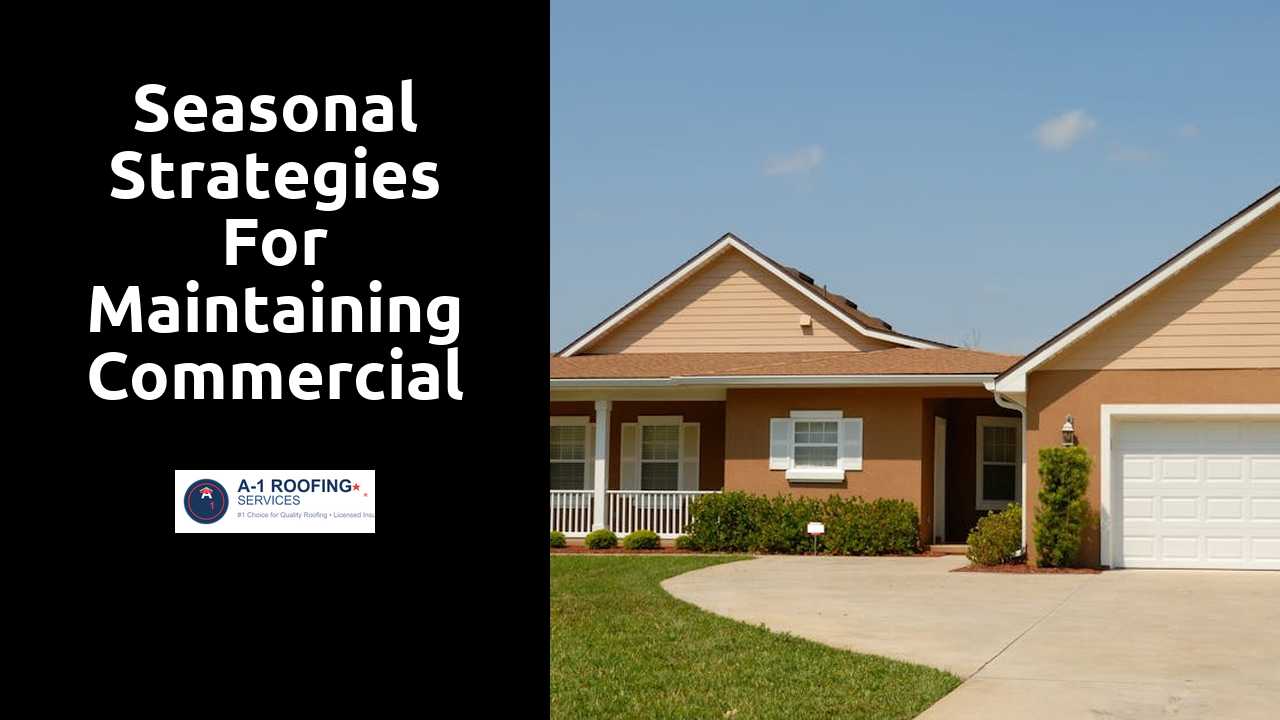
Seasonal Strategies for Maintaining Commercial Roofing Systems
Table Of Contents
Seasonal Inspections
Inspecting a commercial roofing system seasonally is essential in identifying potential issues before they escalate. During inspections, it’s important to look for signs of wear and tear, such as cracked flashing, missing shingles, or deteriorating sealants. Pay attention to water pooling and drainage systems to ensure they are functioning properly. Regular checks can also help uncover small leaks that may lead to significant damage over time.
Additionally, maintaining a checklist can streamline the inspection process. This list might include checking for debris accumulation on the roof surface, inspecting gutter systems for clogs, and ensuring that all roof penetrations, such as vents and HVAC units, are securely sealed. Documenting findings and taking action based on the inspection results helps maintain the overall health of the roofing system, ultimately extending its lifespan and performance.
Identifying Common Roofing Issues
Regular inspections can unveil a range of issues that commonly affect commercial roofing systems. One frequent concern is roof leaks, often caused by deteriorating seals around flashings, vents, or penetrations. These leaks can lead to serious water damage if not addressed promptly. Additionally, ponding water may develop due to improper drainage, which can compromise the roof's integrity over time. Surface wear, such as cracks or blistering, commonly results from prolonged exposure to UV rays and temperature fluctuations.
Another issue worth monitoring is the condition of roofing materials. TPO and PVC membranes may exhibit brittleness or tears, while asphalt shingles can curl or lose granules. Flashing and gutters should also be evaluated for corrosion or blockages, as these can lead to further complications. Regular assessments help identify these issues early, minimizing repair costs and extending the lifespan of the roofing system.
Impact of Extreme Weather on Roof Integrity
Extreme weather events pose significant risks to the integrity of commercial roofing systems. Intense winds can loosen shingles, while heavy rains can lead to water pooling on flat roofs, increasing the likelihood of leaks. Additionally, hail can cause punctures and dents, weakening the underlying structure and affecting overall performance. Roofs exposed to excessive heat may also experience thermal expansion, leading to cracks and weakening of materials over time.
Cold weather brings its own set of challenges. Ice dam formation can trap water and cause it to back up under shingles, which can result in serious water damage within the building. Snow accumulation adds excess weight, potentially leading to collapses in poorly engineered roofs. Understanding these impacts is crucial for timely inspections and maintenance, ensuring that roofs remain functional and durable through varying seasonal conditions.
Strategies for Repairing Storm Damage
After a storm, it is essential to assess the roof for any visible damage. Look for missing shingles, leaks, or exposed sections that could lead to further issues. If you find significant damage, contact a professional roofing contractor to conduct a thorough inspection. They can identify hidden problems that may not be immediately apparent. Ensuring safety is paramount during this process, so using proper ladders and equipment is necessary.
Once the damage has been assessed, prioritize repairs based on the urgency of the situation. Temporary fixes may be required to prevent water intrusion until permanent repairs can be made. Applying a waterproof tarp can provide immediate protection against further exposure. For extensive damage, replacing sections of the roof or entire areas may be necessary to restore integrity. Consulting professionals helps determine the best materials and methods for long-lasting results.
Cost-Effective Seasonal Upgrades
Upgrading insulation is a practical way to improve energy efficiency in commercial roofing systems. Adding insulation can help maintain consistent indoor temperatures, reducing reliance on heating and cooling systems. This not only enhances occupant comfort but also translates into lower energy bills over time. Choosing high-quality, cost-effective insulation materials ensures that businesses can meet their performance needs without exceeding budget constraints.
Another strategic upgrade involves implementing reflective roofing materials or coatings. These options work by reflecting sunlight, reducing heat absorption, and ultimately lowering cooling costs during warmer months. Investing in these solutions may involve an initial expense, yet the long-term savings through decreased energy consumption can significantly offset the costs. Making such upgrades during off-peak seasons can also provide ample opportunity for scheduling and discounts from contractors.
Enhancing Energy Efficiency Through Insulation
Proper insulation is essential for maintaining energy efficiency in commercial roofing systems. A well-insulated roof reduces heat transfer, keeping the building cooler in summer and warmer in winter. This not only contributes to a more comfortable indoor environment but also lessens the load on heating and cooling systems, leading to lower energy bills. Regular inspections of insulation materials can reveal moisture accumulation or wear, which can significantly hinder performance.
Upgrading insulation can also enhance a roof's longevity and overall structural integrity. Modern insulation options such as spray foam or reflective barriers offer advanced properties that can further improve energy savings. Implementing these upgrades during seasonal maintenance can yield significant benefits over time, particularly in energy conservation and cost reduction. Building owners should consider investing in high-quality insulation solutions as a strategic approach to prolonging the lifespan of their roofing systems while enhancing environmental sustainability.
Related Links
Long-Term Maintenance Plans for Flat Commercial RoofsCommon Commercial Roof Issues and Their Solutions